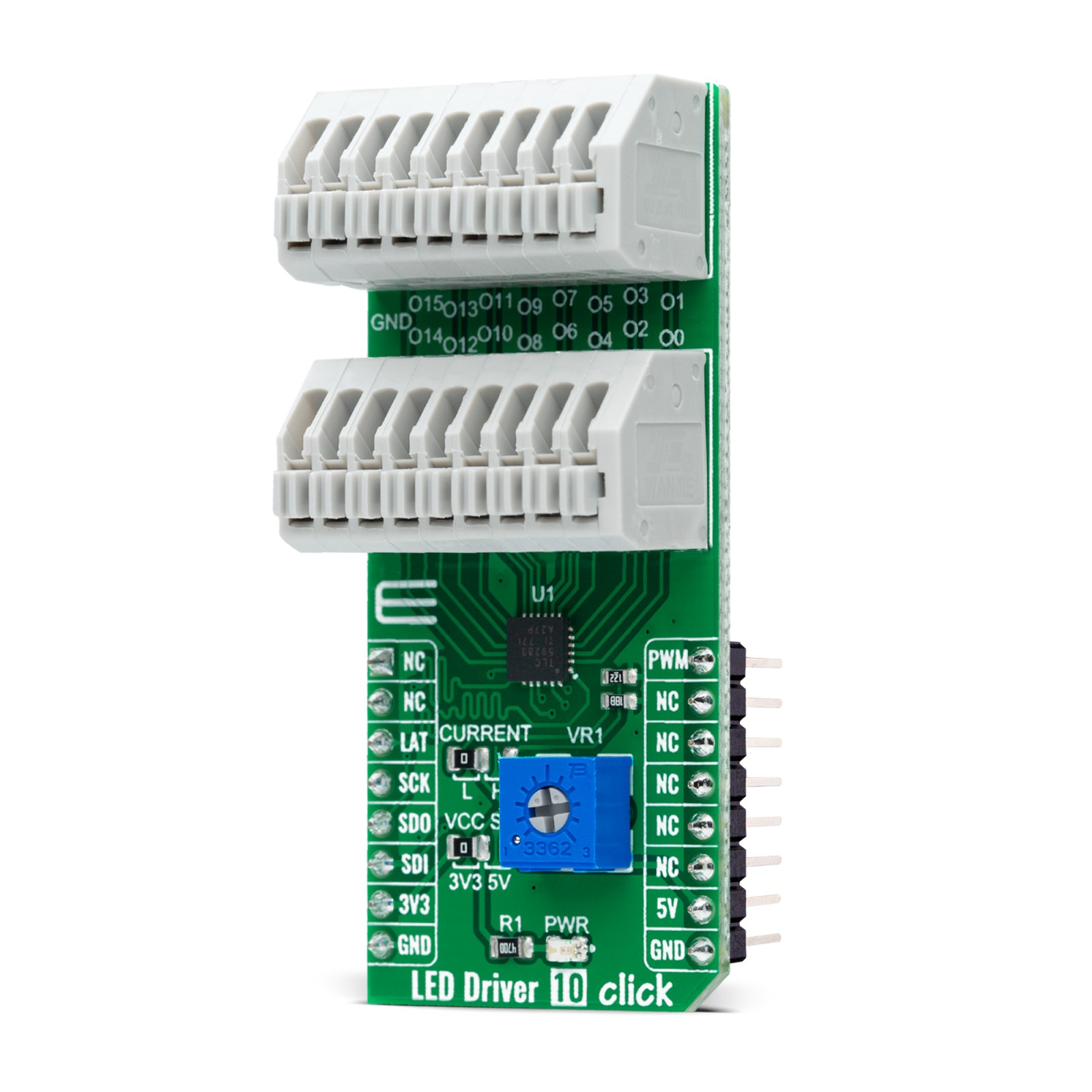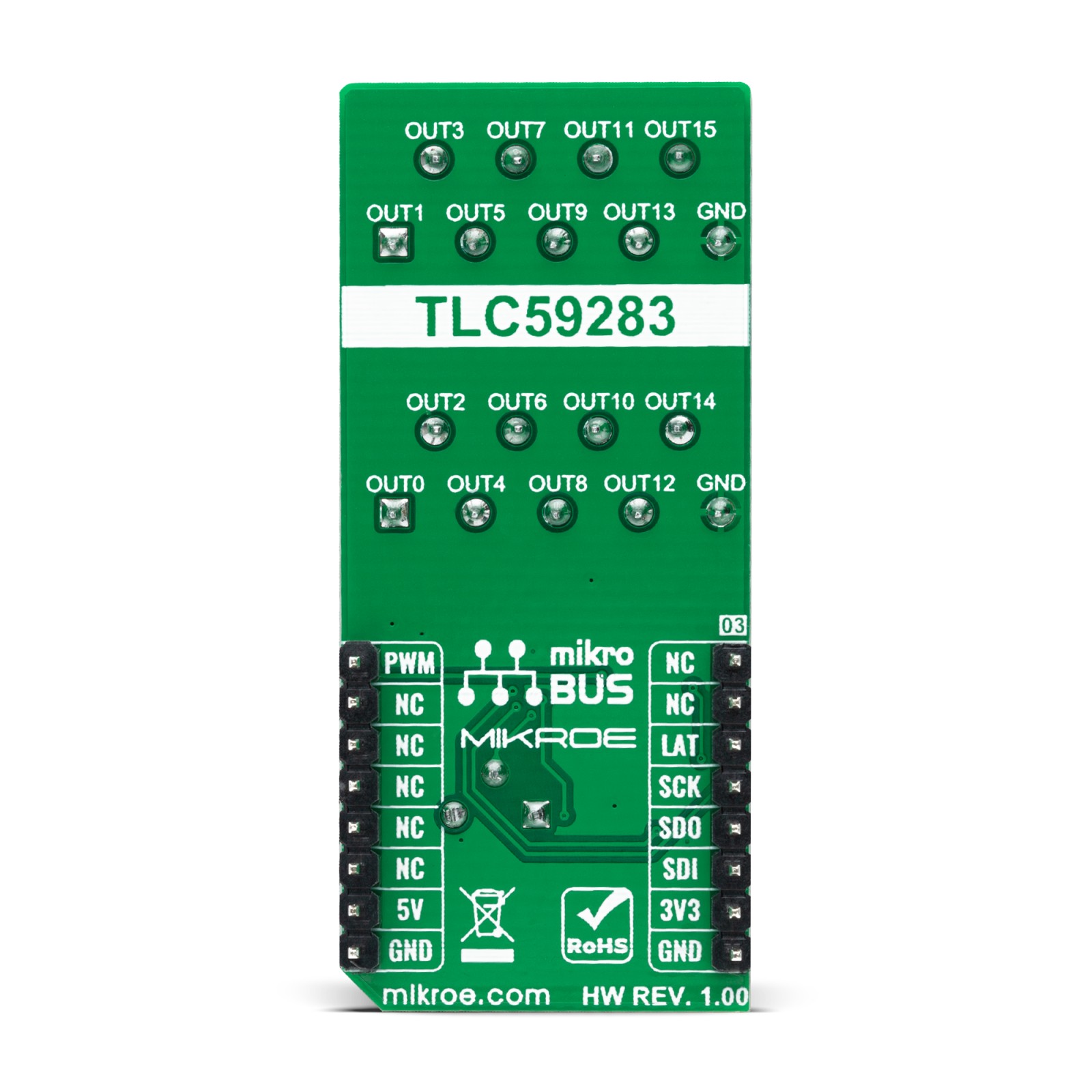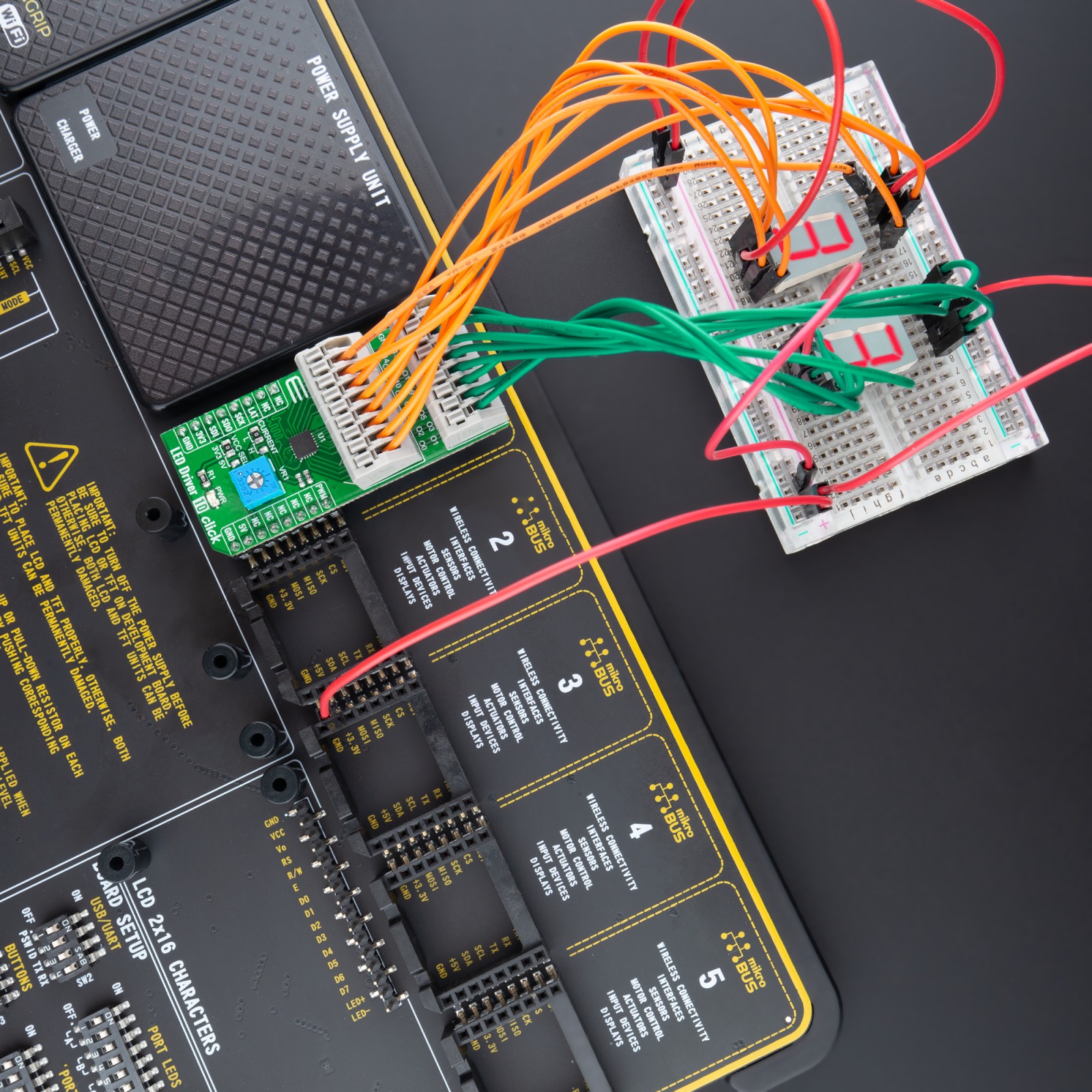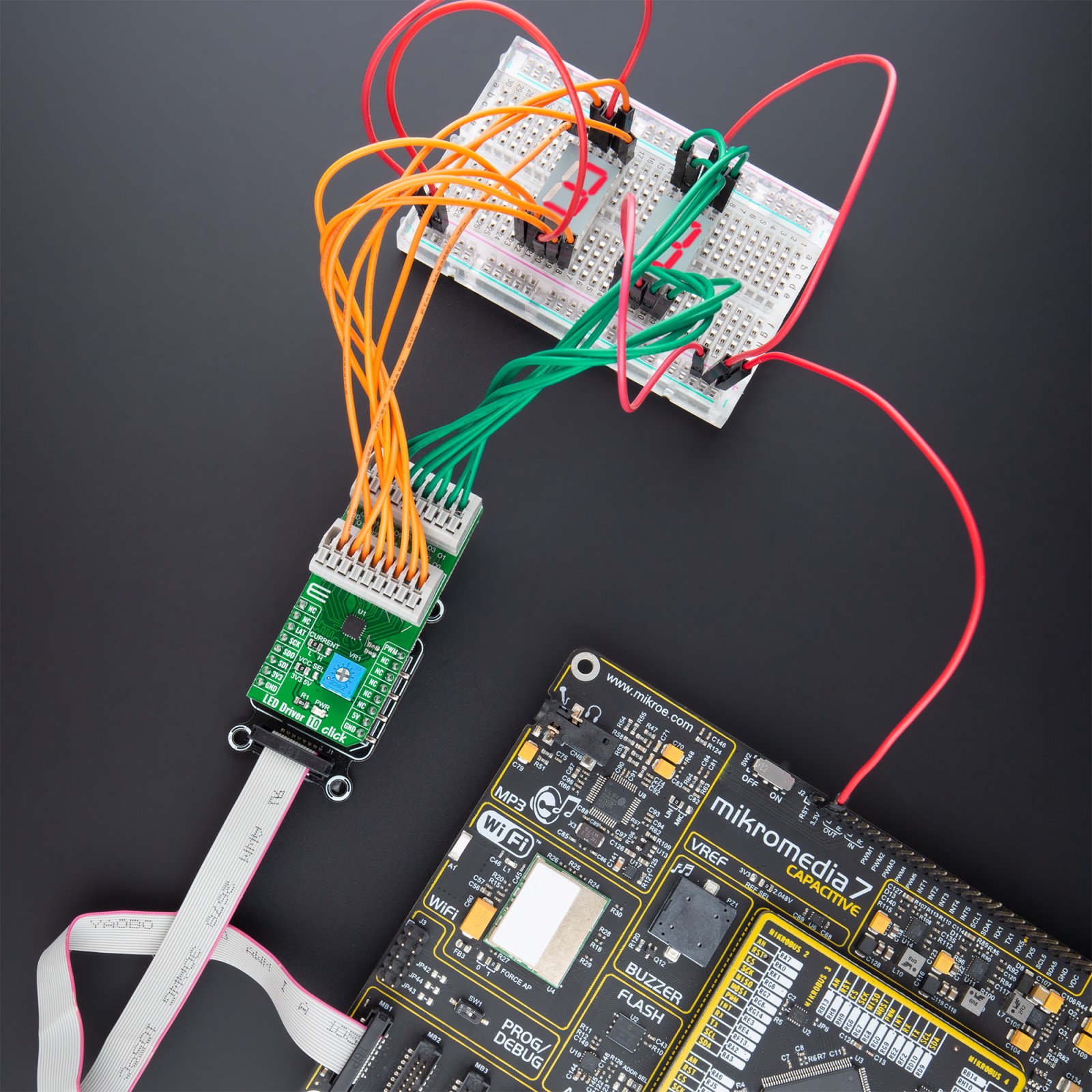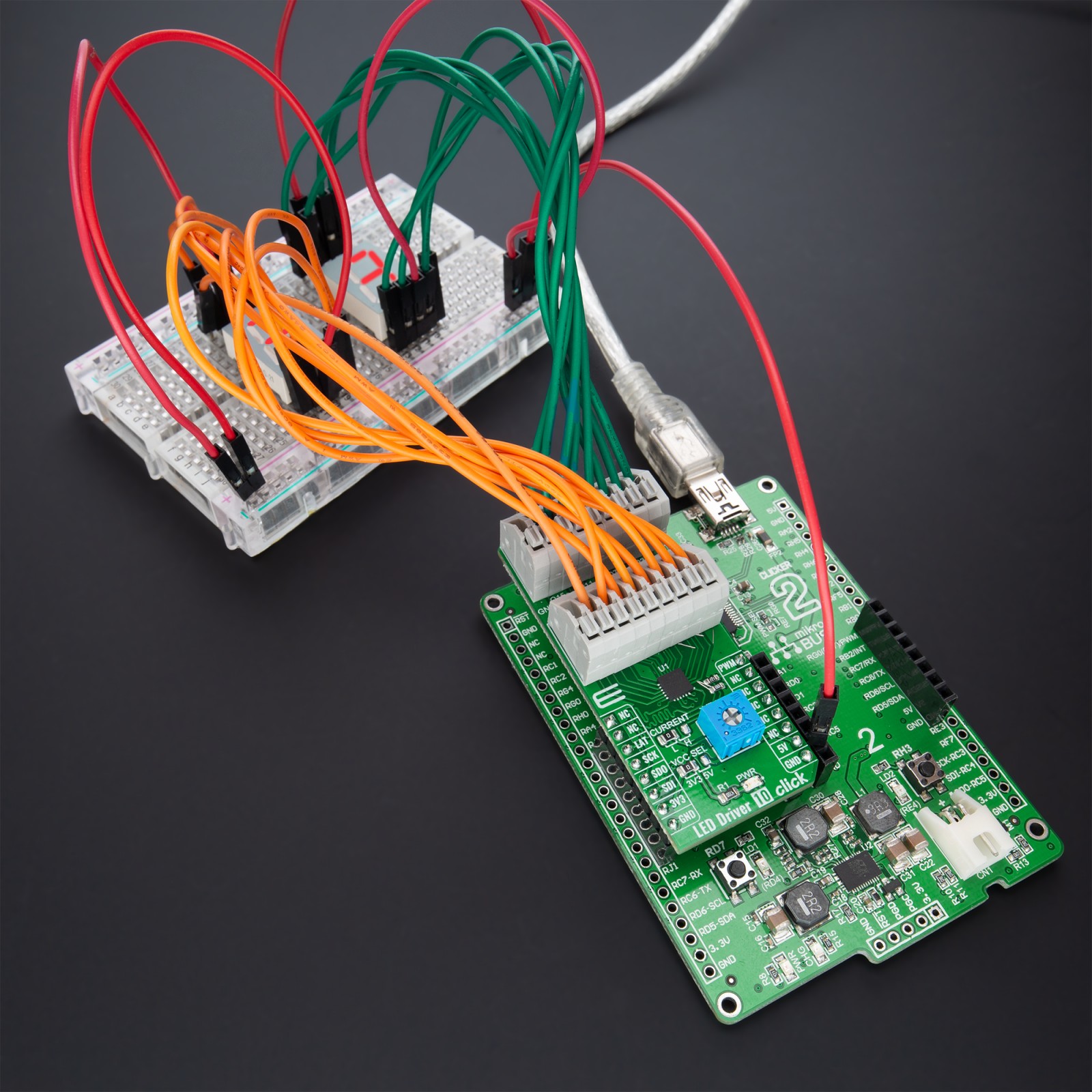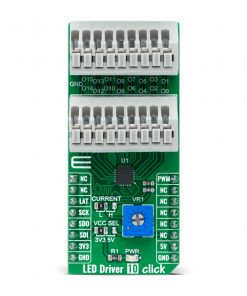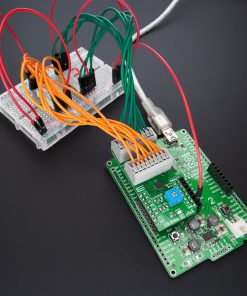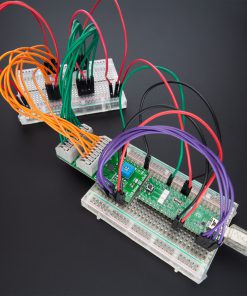Subtotal: R400.00
LED Driver 10 Click
R350.00 ex. VAT
LED Driver 10 Click is a compact add-on board that simplifies the control of multiple LEDs. This board features the TLC59283, a 16-channel, constant-current sink light-emitting diode (LED) driver with pre-charge FET from Texas Instruments. Each LED channel can be individually controlled with a simple SPI serial communication protocol compatible with both 3.3V or 5V logic levels. Each constant-current output has a pre-charge field-effect transistor that can reduce ghosting on the multiplexing drive LED display. It has additional features such as switching off all outputs via just one mikroBUS™ pin and setting the constant-current values on all 16 channels via one onboard potentiometer. This Click board™ is suitable for color mixing and backlight application for amusement products, LED status signalization, home automation projects, and many more.
LED Driver 10 Click is supported by a mikroSDK compliant library, which includes functions that simplify software development. This Click board™ comes as a fully tested product, ready to be used on a system equipped with the mikroBUS™ socket.
Stock: Lead-time applicable.
| 5+ | R332.50 |
| 10+ | R315.00 |
| 15+ | R297.50 |
| 20+ | R286.30 |

 4-20mA T Click
4-20mA T Click 
